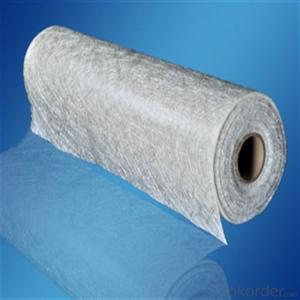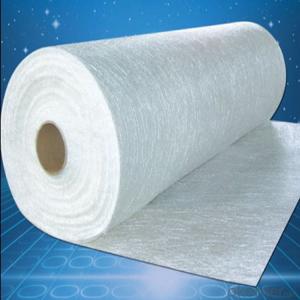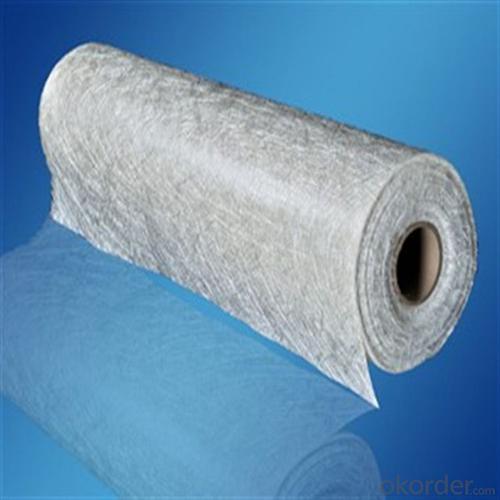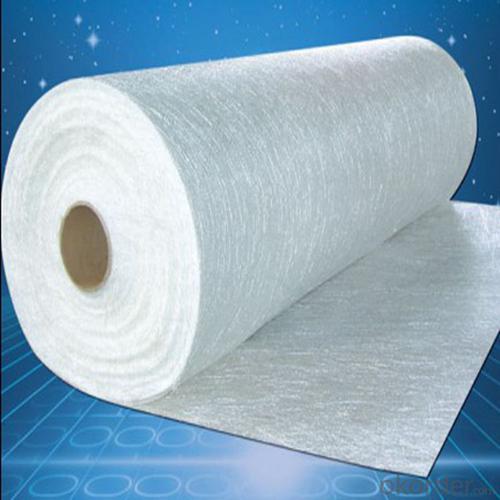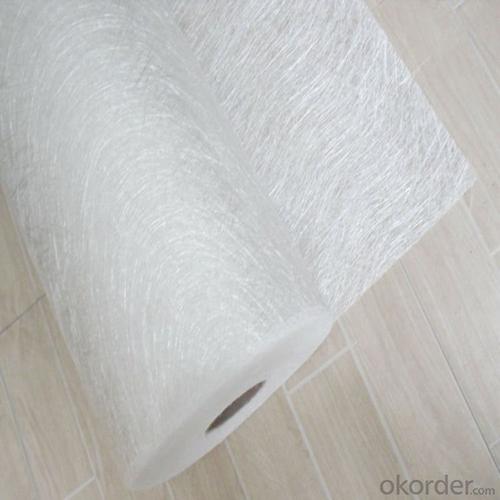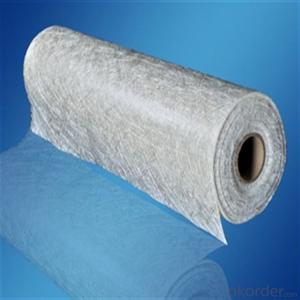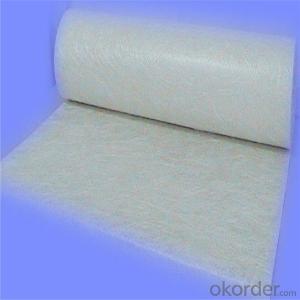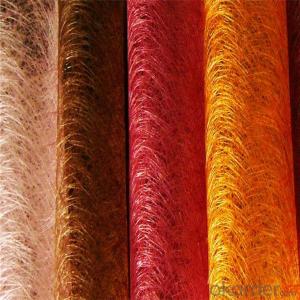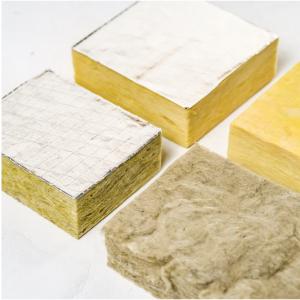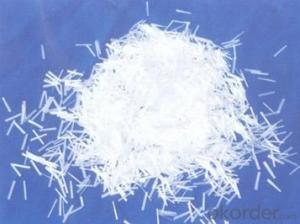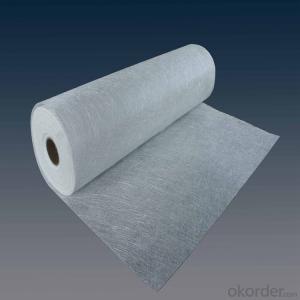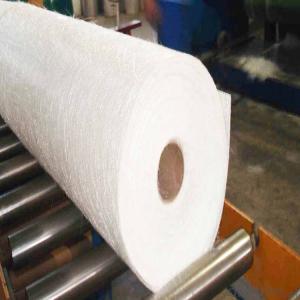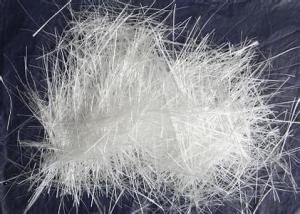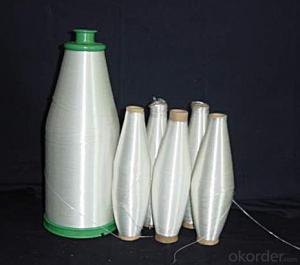Ppg Chopped Strand Fiberglass Reinforced Raw Materials Fiberglass Mat
- Loading Port:
- China main port
- Payment Terms:
- TT OR LC
- Min Order Qty:
- 1 kg
- Supply Capability:
- 5000 kg/month
OKorder Service Pledge
OKorder Financial Service
You Might Also Like
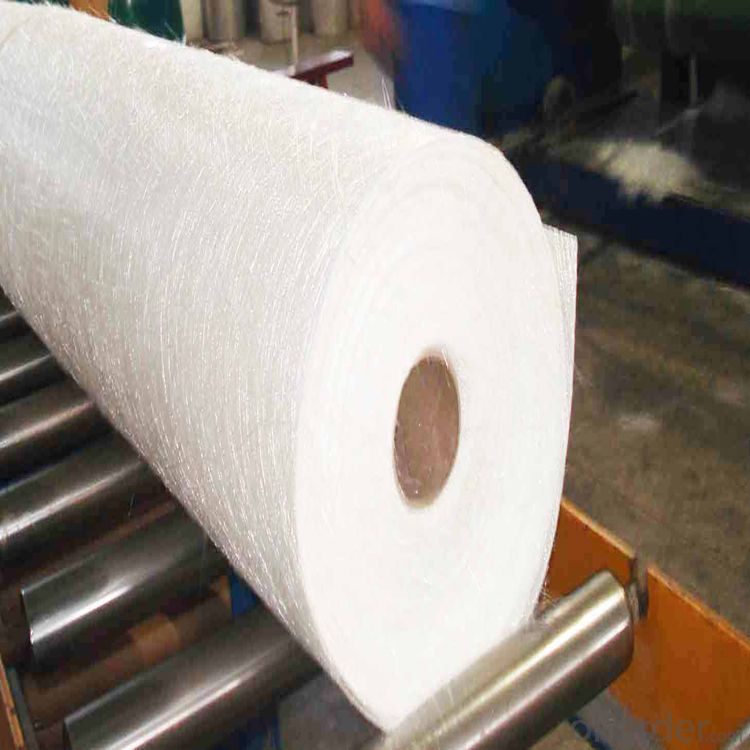
Product Description:
Chopped strand mat is made from chopped glass fibers, which are bonded with powder or emulsion binders. It can be used in hand lay-up process and continuous laminating process to produce FRP products, such as plates, lighting board, hull, bathtub, cooling towers, anti-corrosion materials, vehicles.
Features:
Uniform thickness, softness and hardness good.
Good compatibility with resin, easy completely wet-out.
Fast and consistent wet-out speed in resins and good manufacturability.
Good mechanical properties, easy cutting.
Good cover mold, suitable for modeling complex shapes.
Application:
fiberglass thickness is suitable for application by hand lay-up, reinforce and machine FRP molding,
including interior decoration of vehicles, boat hulls, complete set of sanitary equipment, anticorrosive pipes, tanks, building materials, tables, chairs, panels and all kind of composite FRP products.
Specifications:
Item | Over Density | Moisture Content | Chop Density | Polyester Yarn | Width |
(g/m2) | (%) | (g/m2) | (g/m2) | (mm) | |
EMK300 | 309.5 | ≤0.15 | 300 | 9.5 | 50-3300 |
EMK380 | 399 | 380 | 19 | ||
EMK450 | 459.5 | 450 | 9.5 | ||
EMK450 | 469 | 450 | 19 | ||
EMC0020 | 620.9 | 601.9 | 19 | ||
EMC0030 | 909.5 | 900 | 9.5 |
Special products are available according to customer’s requirement.
Product Packaging:
Each Surface Tissue is wound onto a paper tube which has an inside diameter of 76mm and the mat roll has a diameter of 330mm. The mat roll is wrapped up with plastic film,and then packed in a cardboard box or wrapped up with kraft paper. The rolls can be vertically or horizontally placed. For transportation, the rolls can be loaded into a cantainer directly or on pallets.
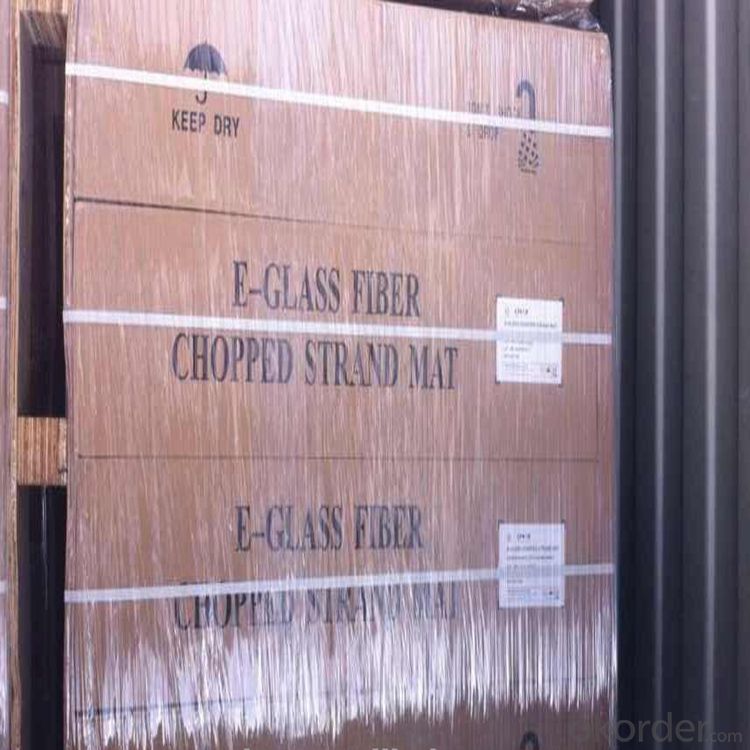
Product Storage:
Unless otherwise specified, Chopped Strand Mat should be stored in a dry, cool and rain-proof area. It is recommended that the room temperature and humidity should be always maintained at 15℃~35℃ and 50%~75% respectively.
Company Information
CNBM (China National Building Material) Group is the largest comprehensive building materials group in China that in integrate scientific research, manufacturing and logistics into one entity. The largest building materials and equipment specialists in China. Upon State Council approval, today CNBM owned more than 300 subordinate manufacturing factories and servicing companies. There are 6 fully owned public listed companies and 11 partially owned with substantial shares public listed companies. In many of these fields, CNBM is playing the leading role in the building industry in the country.

Order Information
Ordering please specify:
1. the product code, 2. weight, 3. width, 4. order quantity, 5. packaging, 6. special requirements please specify.
FAQ:
1. How long will you get reply?
Any inquiry will be replied within 24 hours. Usually we will reply within 12 hours.
2. How long is warranty period?
We provide 3 year warranty period.
3. What is your MOQ?
Any order quantity is available.
4. Can you provide sample?
Yes, samples are in stock. we can offer free sample for you.
5. Payment terms?
We can accept L/C, T/T, Western Union, Paypal etc.
6. Do you offer OEM service?
Yes, we can print customers’ logo on the packaging;
And the size and specification can be produced and design according to your demand.
7. What is the Production Lead Time?
15-20 days for bulk production after confirm the order.
- Q:Can fiberglass chopped strand be used for reinforcing polymer matrix composites?
- Yes, fiberglass chopped strand can be used for reinforcing polymer matrix composites. The chopped strands, made of fine fibers, are added to the polymer matrix to enhance its mechanical properties, such as strength and stiffness. The fibers provide reinforcement and improve the overall performance of the composite material.
- Q:What do glass fiber operating tools do?
- Drawing, drying, winding, fabric etc.
- Q:Can fiberglass chopped strand be used in electrical insulators?
- Indeed, electrical insulators can utilize fiberglass chopped strand. Thanks to its remarkable electrical and heat resistance, fiberglass proves to be an exceptional insulating material. Chopped strand denotes the utilization of short fiberglass strands that can be blended with a resin and shaped into diverse forms, rendering it fitting for insulators. By incorporating chopped strands, the insulator gains additional strength and reinforcement while preserving its electrical insulation capabilities. As a result, fiberglass chopped strand emerges as a widely favored option for electrical insulators, capable of effectively enduring high voltage and providing insulation in a multitude of electrical applications.
- Q:Can fiberglass chopped strand be used in the production of pipes and tanks?
- Yes, fiberglass chopped strand can be used in the production of pipes and tanks. It is commonly used as a reinforcement material in composite manufacturing processes to enhance the strength and durability of pipes and tanks.
- Q:Is fiberglass chopped strand suitable for use in corrosive environments?
- Fiberglass chopped strand is generally deemed unsuitable for corrosive environments. Although fiberglass itself is resistant to chemicals and corrosion, the chopped strand form usually lacks the necessary defense against corrosive elements. The chopped strand comprises small, scattered fibers held together by a binder. This binder is commonly composed of a thermosetting resin, like polyester or epoxy. While these resins offer some level of protection against corrosion, they are not as effective as materials specifically engineered for corrosive environments. In corrosive environments, it is advisable to utilize materials specifically designed to withstand the particular corrosive agents. Examples of such materials include fiberglass reinforced with vinyl ester or other specialized resins, as well as corrosion-resistant metals like stainless steel or titanium. Therefore, if you seek a material for use in corrosive environments, it is recommended to consult experts or suppliers who can suggest suitable alternatives specifically designed for such conditions.
- Q:What are the typical compression properties of fiberglass chopped strand composites?
- The compression characteristics of fiberglass chopped strand composites can differ depending on various factors, including fiber type, fiber orientation, resin matrix, and manufacturing technique. However, in general, these composites demonstrate excellent compression strength and stiffness. Fiberglass chopped strand composites typically possess a high compressive strength, making them ideal for structural applications that require load-bearing capabilities. The specific strength may vary depending on the composition, but it is often comparable to, or even superior than, other commonly used composites like carbon fiber composites. Regarding stiffness, fiberglass chopped strand composites exhibit favorable performance. The fibers within the composite material act as reinforcement, enhancing overall stiffness. This stiffness is particularly advantageous in applications where rigidity and dimensional stability are crucial. It is important to note that the compression properties of fiberglass chopped strand composites can be customized to meet specific requirements by adjusting factors such as fiber content, fiber orientation, and resin selection. Manufacturers can optimize the compression performance of these composites for different applications by varying these parameters. In summary, fiberglass chopped strand composites are renowned for their impressive compression properties, combining high strength and stiffness. These properties enable their suitability for a wide range of applications, including automotive components, aerospace structures, sporting goods, and construction materials.
- Q:What are the advantages of using fiberglass chopped strand in construction?
- There are several advantages of using fiberglass chopped strand in construction. Firstly, fiberglass is highly versatile and can be molded into various shapes and sizes, allowing for flexibility in design and construction. It is also lightweight, making it easier to handle and transport. Additionally, fiberglass is known for its high tensile strength, providing structural integrity and durability to the finished product. It is resistant to corrosion, rot, and pests, making it a long-lasting material. Furthermore, fiberglass offers excellent insulation properties, both thermal and acoustic, enhancing energy efficiency and providing a comfortable living or working environment. Overall, the use of fiberglass chopped strand in construction offers numerous benefits, making it a popular choice among builders and architects.
- Q:Is fiberglass chopped strand suitable for aerospace interior components?
- Indeed, aerospace interior components can be made from fiberglass chopped strand, which is a suitable material. Fiberglass, a lightweight and durable substance, possesses an excellent strength-to-weight ratio, making it an ideal choice for aerospace applications. The manufacturing of interior components, such as panels, partitions, and cabin linings, frequently involves the utilization of chopped strand fiberglass. This material offers good mechanical properties, including high tensile strength and impact resistance, which are crucial for ensuring the safety and performance of aerospace interiors. Furthermore, fiberglass is fire-resistant and capable of meeting the stringent fire safety requirements of the aerospace industry. Consequently, fiberglass chopped strand is a dependable and widely utilized material for aerospace interior components.
- Q:Can fiberglass chopped strand be used in water storage tanks?
- Fiberglass chopped strand can indeed find utility within water storage tanks. This material, known for its robustness and durability, boasts resistance against corrosion and can endure even the harshest environmental conditions. Its exceptional qualities, such as its high tensile strength, lightweight nature, and ability to withstand chemical exposure and UV radiation, make it a frequently chosen option for the construction of water storage tanks. The chopped strand variant of fiberglass is often employed during the manufacturing process of fiberglass-reinforced plastics (FRPs), which are extensively utilized within water storage tanks. Typically, these chopped strands are combined with a resin matrix, resulting in a composite material that significantly enhances the tank's strength and structural stability. Furthermore, fiberglass's impermeability renders it an ideal choice for averting water leakage and contamination. All in all, fiberglass chopped strand is a prevalent and fitting material for the creation of water storage tanks.
- Q:How does the fiber surface treatment of fiberglass chopped strand affect its performance?
- The fiber surface treatment of fiberglass chopped strand significantly influences its performance. The treatment improves the adhesion between the fiber and the resin matrix, resulting in enhanced mechanical properties and higher strength. It also reduces the likelihood of fiber breakage during processing and improves the fiber's resistance to chemicals and moisture. Overall, the fiber surface treatment plays a crucial role in optimizing the performance and durability of fiberglass chopped strand in various applications.
1. Manufacturer Overview |
|
|---|---|
| Location | |
| Year Established | |
| Annual Output Value | |
| Main Markets | |
| Company Certifications | |
2. Manufacturer Certificates |
|
|---|---|
| a) Certification Name | |
| Range | |
| Reference | |
| Validity Period | |
3. Manufacturer Capability |
|
|---|---|
| a)Trade Capacity | |
| Nearest Port | |
| Export Percentage | |
| No.of Employees in Trade Department | |
| Language Spoken: | |
| b)Factory Information | |
| Factory Size: | |
| No. of Production Lines | |
| Contract Manufacturing | |
| Product Price Range | |
Send your message to us
Ppg Chopped Strand Fiberglass Reinforced Raw Materials Fiberglass Mat
- Loading Port:
- China main port
- Payment Terms:
- TT OR LC
- Min Order Qty:
- 1 kg
- Supply Capability:
- 5000 kg/month
OKorder Service Pledge
OKorder Financial Service
Similar products
New products
Hot products
Hot Searches
Related keywords
